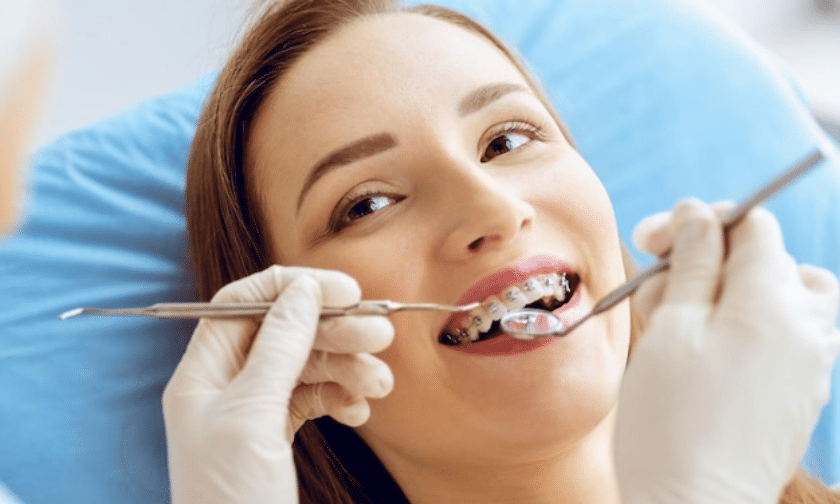9 Simple Techniques For Legacy Orthodontics
9 Simple Techniques For Legacy Orthodontics
Blog Article
5 Simple Techniques For Legacy Orthodontics
Table of ContentsSome Known Details About Legacy Orthodontics Legacy Orthodontics for DummiesThe smart Trick of Legacy Orthodontics That Nobody is DiscussingFascination About Legacy OrthodonticsOur Legacy Orthodontics Statements
In enhancement, we offer adjustable treatment routines, flexible repayment alternatives and an enjoyable, pleasurable experience.An orthodontist is a dentist trained to identify, stop, and deal with teeth and jaw abnormalities. Orthodontists function with individuals of all ages, from kids to adults.
Malocclusion, or misaligned teeth, can result in dental concerns, consisting of tooth degeneration, gum illness, and difficult or uncomfortable chewing. Yet not everybody is birthed with straight teeth. If you have a poor bite or large areas in between your teeth, you may want to consult a dentist concentrating on orthodontic treatment.
All About Legacy Orthodontics
( Photo Credit History: DigitalVision/Getty Images) Orthodontists utilize fixed and detachable oral devices, like dental braces, retainers, and bands, to alter the position of teeth in your mouth. Orthodontic therapy is for oral irregularities, consisting of: Uneven teethBite issues, like an overbite or an underbiteCrowded teeth or teeth that are as well much apartJaw misalignmentThe goal of orthodontic therapy is to improve your bite.
While you could think of orthodontists as primarily for kids or teens who require braces, they can correct dental issues at any type of age. Orthodontists attend college, oral institution, and orthodontic college.
, but not all dental practitioners are orthodontists. They focus on 2 areas: Exactly how to properly and safely relocate teeth Just how to appropriately assist development in the teeth, jaw, and faceOnce an orthodontist has completed training, they have the option to end up being board accredited.
6 Easy Facts About Legacy Orthodontics Described
Misalignment, or malocclusion, is the most typical reason individuals see an orthodontist. It is hereditary and is the outcome of dimension distinctions in between the upper and lower jaw or in between the jaw and teeth. Malocclusion causes tooth congestion, a twisted jaw, or uneven bite patterns. Malocclusion is typically treated with: Your orthodontist affixes steel, ceramic, or plastic square bonds to your teeth.
Some people need a headgear to help relocate teeth into line with stress from outside the mouth. A retainer is a personalized device that maintains your teeth in area.
They're frequently utilized on kids. They can develop additional room in the mouth without needing to pull teeth. If you have a major underbite or overbite, you might require orthognathic surgical procedure (also called orthodontic surgical treatment) to lengthen or shorten your jaw. Orthodontists make use of cords, surgical screws, or plates to sustain your jaw bone.
You might need to see an orthodontist if you have: Crowding or otherwise adequate area for all of your teethOverbite, when your top teeth come your base teethUnderbite, when your bottom teeth are too far forwardSpacing or problems with gapsCrossbite, which is when your upper teeth fit behind your bottom teeth when your mouth is closedOpen bite or an upright space in between your front bottom and top teethMisplaced midline, when the facility of your base and top teeth do not line up Fixing a dental malocclusion can: Make biting, eating, and speaking easierImprove the symmetry of our face and your general appearanceEase pain from temporomandibular joint conditionsDifferent your teeth and make them much easier to clean up, helping stop dental cavity or dental caries It's frequently a dental professional who first notifications misaligned teeth throughout a routine test.
Legacy Orthodontics Can Be Fun For Everyone

During your initial orthodontic assessment, you'll likely have: An oral examPhotos taken of your face and smileDental X-raysPanoramic (360 level) X-rays of your face and headImpressions to create molds of your teethThese tests will certainly help your orthodontist recognize exactly how to proceed with your therapy. leesburg orthodontist. An orthodontist is a dentist that's had training to treat your teeth and jaw
An orthodontist is focused on your bite, so something like a damaged tooth would be dealt with by a dental practitioner. Orthodontists are focused on your bite, or the method your teeth fit with each other, and the straightness of your teeth.
Ever before asked yourself how celebrities always seem to have completely aligned teeth? The response commonly depends on the skilled hands of an orthodontist. What specifically does an orthodontist do? Orthodontists are oral professionals who focus on fixing abnormalities in the teeth and jaws. Their knowledge goes past simply pop over to this web-site producing a gorgeous smile; it prolongs to boosting your total dental health and wellness and function.
Unknown Facts About Legacy Orthodontics

, orthodontists have a varied toolkit at their disposal. These tried-and-true braces utilize a system of brackets bonded to the teeth and connected by wires.
Clear aligners, like Invisalign, are a prominent alternative for individuals looking for an extra very discreet treatment choice. These removable trays are tailor-made to progressively shift the teeth's setting. Headwear might be made use of combined with dental braces or aligners to use additional targeted pressures, especially for fixing jaw discrepancies. In situations of narrow jaws, palatal expanders can be utilized to produce space for appropriate tooth positioning.
Report this page